If in the previous example, we use a diverging lens with a focal length 10.0cm to form an image of the pencile kept 15 cm in front of the lens, locate and characterize the image.

In accordance with cartesian sign convention, the given parameters are
f=−10cm,u=−15cm
From lens equation, we have
=1v−1f+1u
=1(−10)+1(−15)=−16,v=−6cm
Lateral magnification m=vu=−6−15=0.40
The minus sign with image shows that the image is located on the side of the object. The magnification is positive and m<1 , which shows that the image is upright and diminished.
Topper's Solved these Questions
- GEOMETRICAL OPTICSBook:CENGAGE PHYSICS ENGLISHChapter:GEOMETRICAL OPTICSExercise:Exercise1.7
Explore 21 Videos
- GEOMETRICAL OPTICSBook:CENGAGE PHYSICS ENGLISHChapter:GEOMETRICAL OPTICSExercise:Subjective
Explore 26 Videos
- GEOMETRICAL OPTICSBook:CENGAGE PHYSICS ENGLISHChapter:GEOMETRICAL OPTICSExercise:Exercise1.5
Explore 22 Videos
- ELECTRON,PHONTS,PHOTOELECTRIC EFFECT & X-RAYSBook:CENGAGE PHYSICS ENGLISHChapter:ELECTRON,PHONTS,PHOTOELECTRIC EFFECT & X-RAYSExercise:dpp 3.3
Explore 15 Videos
- HEATING EFFECT OF CURRENTBook:CENGAGE PHYSICS ENGLISHChapter:HEATING EFFECT OF CURRENTExercise:Thermal Power in Resistance Connected in Circuit
Explore 27 Videos
Similar Questions
In Figure. , find the position of final image formed.
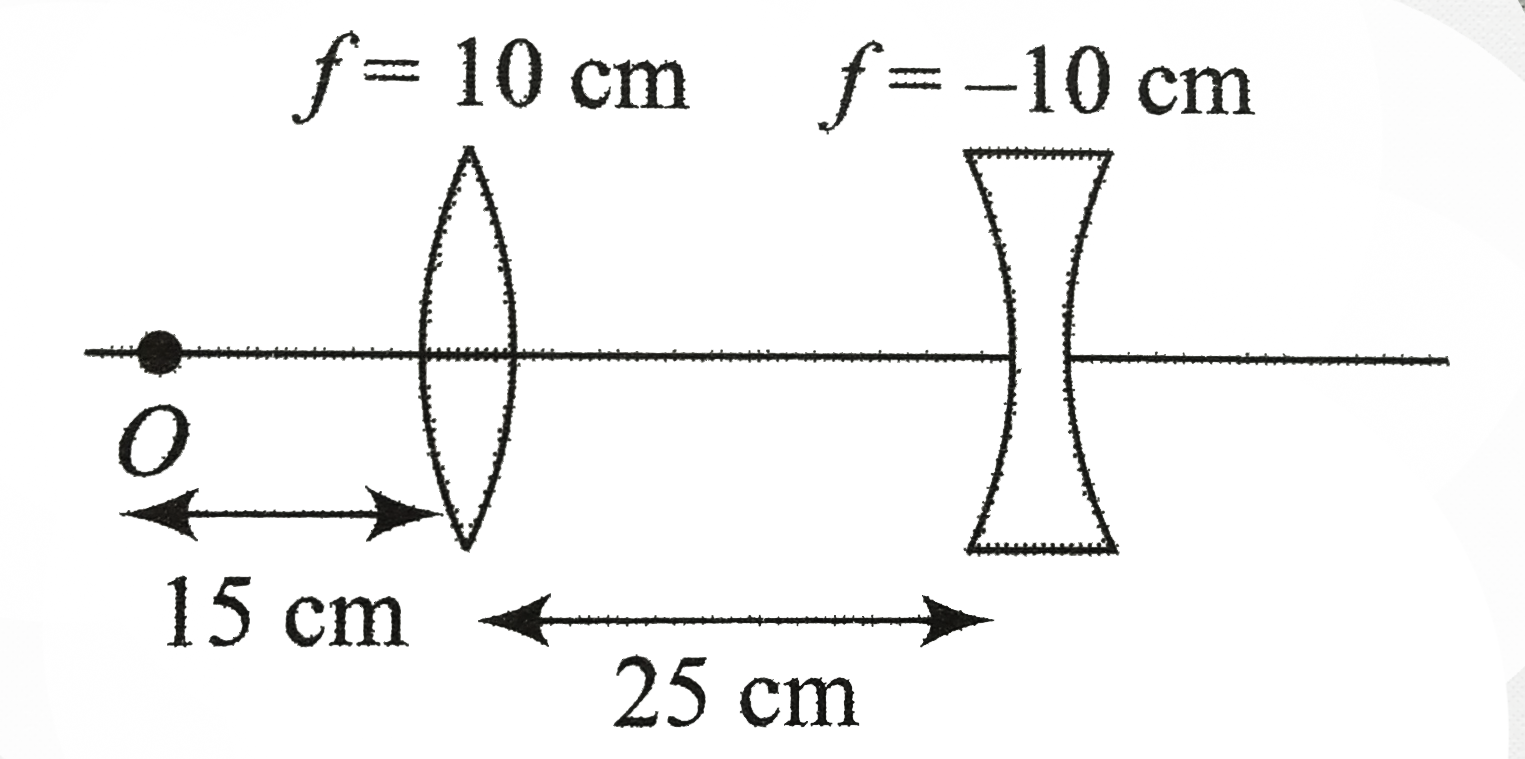
View SolutionA ray of light is falling on a glass sphere of μ=√3 such that the incident ray and the emergent ray, when produced, intersect at a point on the surface of the sphere. Find the value of angle of incidence.
View SolutionIdentify the statements are True of False.
a. The equation μ2v−μ1u=μ12−μ1R is applicabel to a plane surface for R=∞ .
h. In the above equation, μ1 is medium in which the object is placed and μ2 is the medium in which the image is formed.
c. In the figure shown, the real image of object O is formed at a distance 5R in the medium.
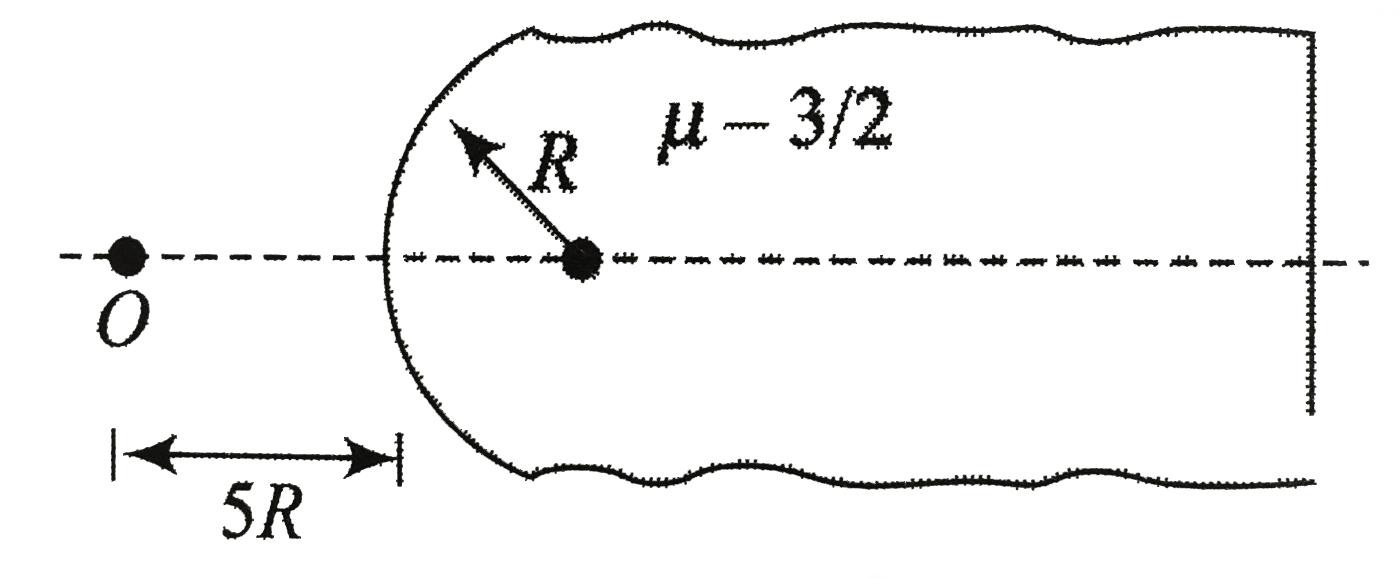
d. In figure, the image of an object O place on the center face of the sphere is formed at infinity,.
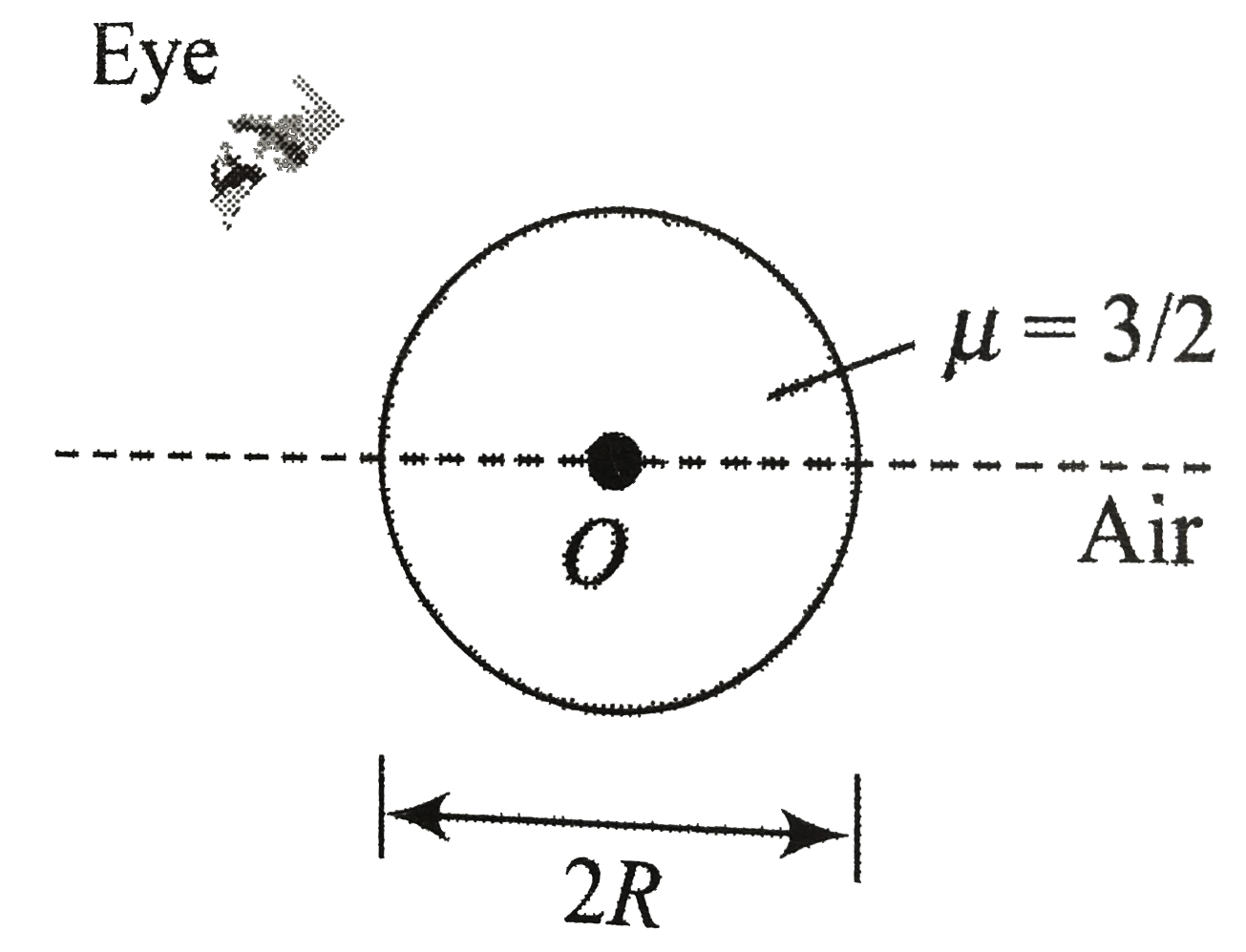
e. In fig , the image of an object O placed on the opposite face of the sphere is foremd at infinity.
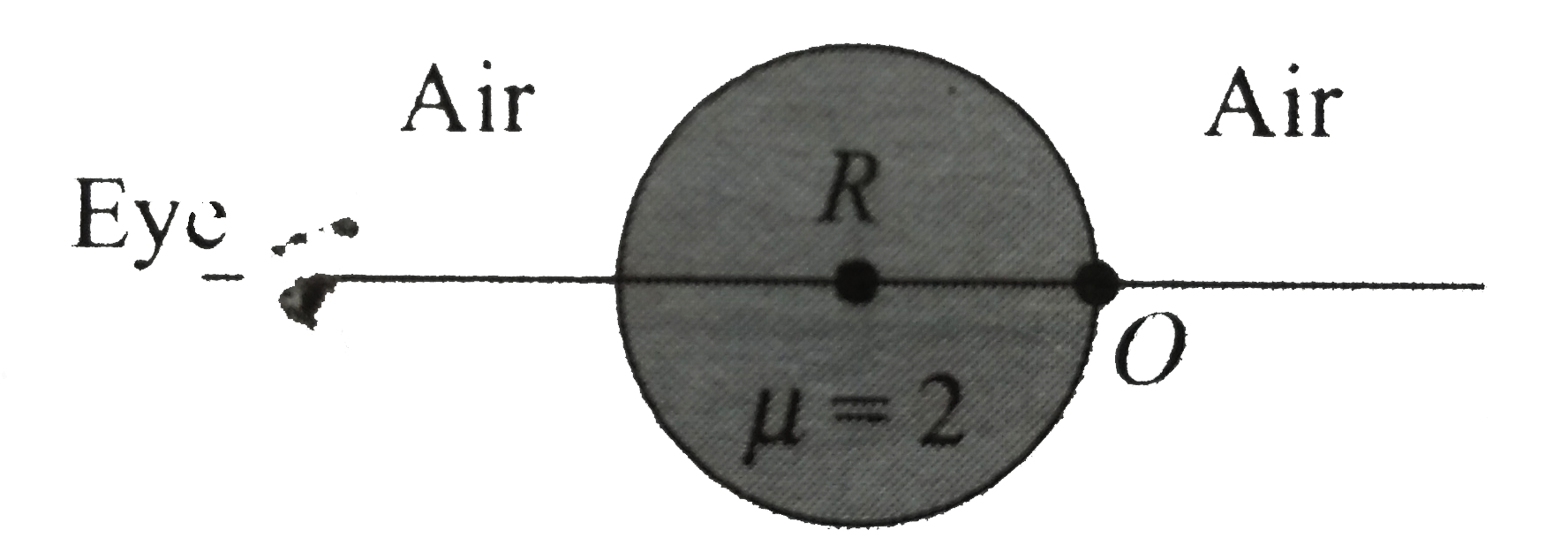
View SolutionThe figure shows different graphs between stopping potential (V0) and frequency (v) for photosensitive surface of cesium , potassium , sodium and lithium. The plots are parallel. Correct ranking of the targets according to their work function greatest forst will be
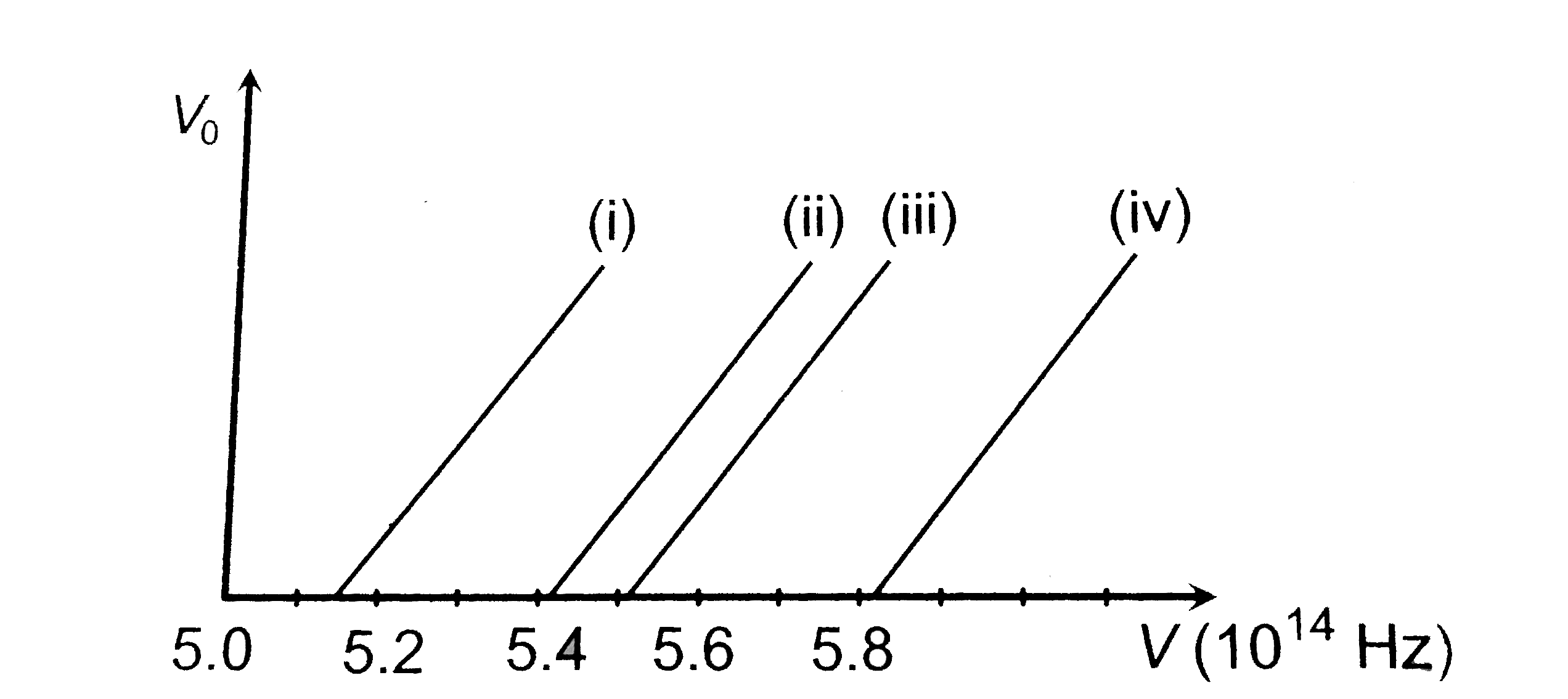
View SolutionA room AC run for 5 hour at a voltage of 220V The wiring of the room constant of Cu of 1mm ratio and a length of 10m consumption per day is 10 commerclal unit What fraction of it goes in the joule heated in wire? What would happen if the wiring is made of aluminum of the same distances? [ρcu=1.7×10−8Ω,ρA1=2.7×10−8Ωm]
View SolutionIf in the previous example, we use a diverging lens with a focal length 10.0cm to form an image of the pencile kept 15 cm in front of the lens, locate and characterize the image.
View SolutionA diverging lens with magnitude of focal length 25cm is placed at a distance of 15cm from a converging lens of magnitude of focal length 20cm. A beam of parallel light falls on the diverging lens. The final image formed is.
View SolutionAn object kept at 60 cm from a lens gives a virtual image at 20 cm in front of the lens. What is the focal length of the lens ?
It it a converging lens or diverging lens ? Also find the magnification produced.
View SolutionAn object kept 60 cm from a lens gives a virtual image 20 cm in front of the lens. What is the focal length of the lens? Is it a converging lens or diverging lens?
View SolutionAn object kept 60 cm from a lens gives a virtual image 20 cm in front of the lens. What is the focal length of the lens? Is it a converging lens or diverging lens?
View SolutionAn object is kept at 60 cm in front of a convex lens. Its real image is formed at 20 cm from the lens . Find the focal length and power of the lens.
View SolutionAn object kept 60 cm from a lens gives a virtual image 20 cm in front of the lens . What is the focal length and power of the lens ? Is it is converging lens or diverging lens ?
View SolutionAn object is kept at 20 cm in front of a convex lens and its real image is formed at 60 cm from the lens . Find The focal length and power of the lens .
View SolutionAn object is placed at 50 cm from a lens produces a virtual image at a distance of 10 cm in front of the lens . What is the focal length of the lens ? Is it converging or diverging ?
View SolutionA diverging lens with magnitude of focal length 25 cm is placed at a distance of 15 cm from a converging lens of magnitude of focal length 20 cm. A beam of parallel light falls on the diverging lens. The final image formed is
View SolutionAn object kept 60 cm from a lens gives a virtual image 20 cm in front of the lens. What is the focal length of the lens? Is it a converging lens or diverging lens?
View Solution
